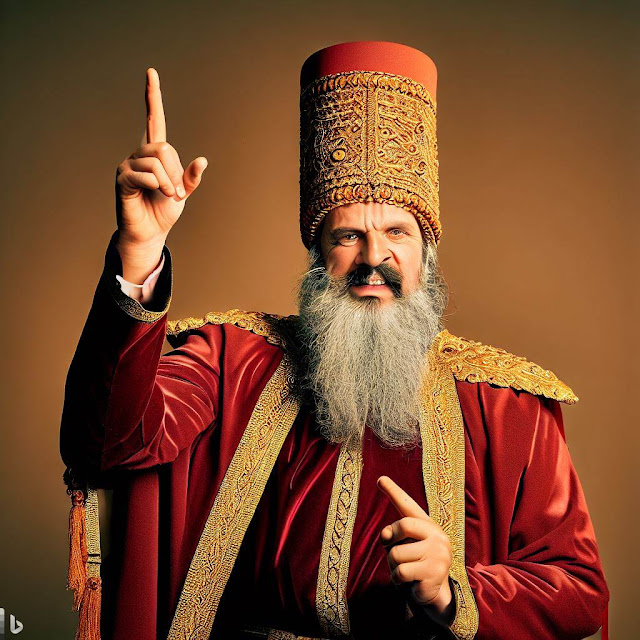The Ottoman Empire was one of the most powerful empires in world history, spanning more than six centuries and encompassing vast territories across Europe, Asia, and Africa. At the heart of this great empire were the sultans, the absolute rulers who governed the empire with an iron fist and left an indelible mark on history. But who was the greatest Ottoman sultan? In this article, we will explore the legacy of the Ottoman Empire and examine the achievements and shortcomings of its most celebrated leaders.
The Rise of the Ottoman Empire
The Ottoman Empire was founded by Osman I in the late 13th century, in the wake of the collapse of the Seljuk Sultanate of Rum. Osman and his successors expanded the Ottoman state through a combination of military conquests, strategic alliances, and shrewd diplomacy, eventually becoming one of the most formidable powers in the world.
The Early Sultans
The early Ottoman sultans, including Osman, Orhan, and Murad I, laid the foundations for the empire's military and administrative institutions and established a tradition of expansion and conquest that would continue for centuries.
Mehmed the Conqueror
Perhaps the most famous Ottoman sultan, Mehmed II, also known as Mehmed the Conqueror, was responsible for one of the empire's most significant achievements - the conquest of Constantinople in 1453. This marked the end of the Byzantine Empire and the beginning of Ottoman dominance in the Eastern Mediterranean.
The Golden Age of the Ottoman Empire
The 16th and 17th centuries are widely regarded as the golden age of the Ottoman Empire, a period of unprecedented prosperity and cultural flourishing.
Suleiman the Magnificent
Suleiman the Magnificent, also known as Suleiman the Lawgiver, was the longest-reigning sultan of the Ottoman Empire and oversaw a period of great expansion and cultural achievement. During his reign, the empire reached its territorial zenith, stretching from Hungary to Yemen, and Istanbul became one of the most vibrant and cosmopolitan cities in the world.
Arts and Culture
The Ottoman Empire was renowned for its contributions to the arts and sciences, with advances in fields such as architecture, calligraphy, and music. This era also saw the rise of Ottoman literature, with writers such as Yunus Emre and Ahmed Bican penning works that are still celebrated today.
Decline and Fall
Despite its remarkable achievements, the Ottoman Empire began to decline in the 18th and 19th centuries, facing internal unrest, external pressures from European powers, and economic stagnation.
The Tanzimat Era
The Tanzimat reforms of the mid-19th century aimed to modernize the Ottoman Empire and bring it in line with European powers, but their implementation was uneven and often ineffective.
Conclusion:
The Ottoman Empire and its sultans left an enduring mark on world history, shaping the course of politics, culture, and society in ways that continue to resonate today.
While the question of who was the greatest Ottoman sultan may never be fully resolved, there is no denying the lasting impact of their achievements and the legacy of the empire they created.
From the early conquests of Osman to the cultural flowering of Suleiman, the Ottomans remain a fascinating and important chapter in the story of human civilization.
The Last Sultans
The last Ottoman sultans, including Abdulhamid II and Mehmed V, struggled to maintain control over a rapidly changing empire and were eventually swept away by the winds of revolution and war.
FAQs:
Who was the longest-reigning Ottoman sultan?
Answer: Suleiman the Magnificent, who ruled from 1520 to 1566, was the longest-reigning sultan of the Ottoman Empire.
Who was the greatest Ottoman sultan?
Answer: The question of who was the greatest Ottoman sultan is a matter of debate and opinion. Some historians point to Mehmed II for his conquest of Constantinople, while others argue for Suleiman the Magnificent for his military and cultural achievements.
What was the Ottoman Empire's impact on the world?
Answer: The Ottoman Empire had a profound impact on world history, shaping the course of politics, economics, and culture in Europe, Asia, and Africa. Its legacy can be seen in the modern nation-states that emerged from its dissolution, as well as in the cultural and artistic traditions that continue to thrive in its former territories.





